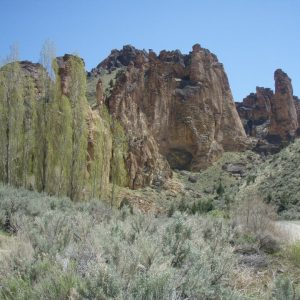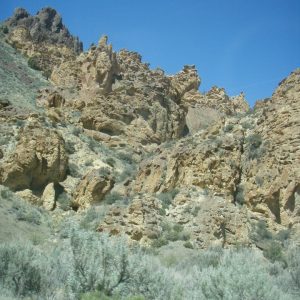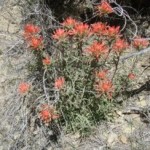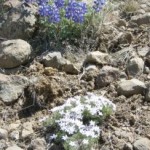Before getting the CLM internship in Vale, Oregon, I imagined all of Oregon as being like Portland: rain, forests, rocky coastline. The eastern side of Oregon couldn’t be farther from this image. In fact, before coming here, I was surprised when I looked at a map and saw the amount of desert and scrubland in Oregon, as compared to the amount of forest. Vale is beautiful in a very different way from what I am used to. I think of the gently sloping, forested mountains of Appalachia (near where I come) as a kind of soft beauty. Vale is all yellow rock, volcanic remains, and then the amazingly hardy plants that somehow survive in this seemingly impenetrable landscape.
The wildlife in the desert is abundant and much more diverse that I would have expected. Already, we have seen ring-necked pheasants, a short-eared owl, golden eagles, pronghorn antelope, mule deer, quail, killdeer, a horned toad, marmots, and what seems like a million ground squirrels. Even with incredibly little rain and almost no shade, the scrubland teems with life.
I have only been here for a few weeks now and feel that I am getting a condensed crash course in sagebrush botany. I’m amazed at what I’ve been able to pick up already but I think that the botany skills that I am honing will be useful for whatever ecosystem I work in next. Our first sensitive plant to monitor: Hackelia cronquistii, a fragile white-blue borage with an affinity for north-facing slopes. After surveying several sites that had not been visited since the late 1980s and finding no Hackelia, we were enthusiastic to find one population of over 100 plants yesterday. Hopefully, it will be one of many to come.
One idea that I have learned quickly is the difference between a good quality hillside and a poor quality hillside. Perennial bunchgrasses hold the soil together and prevent erosion: they give slopes a bumpy, uneven look. On the other hand, cheat grass, an invasive annual grass, has managed to establish itself on many hills, especially after fires. It gives slopes an even, smooth, light green tint and usually dominates the ecosystem. When cheat grass takes over, few natives can co-exist.
I’m looking forward to continuing my crash course in botany and look forward to meeting the rest of the interns at the CLM workshop in June!
- Leslie Gulch
- Indian Paintbrush, a showy and iconic early flower
- Two common sagebrush inhabitants: Lupines and Phloxes




